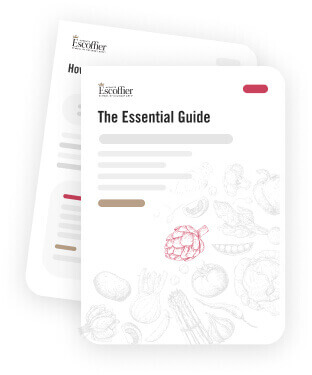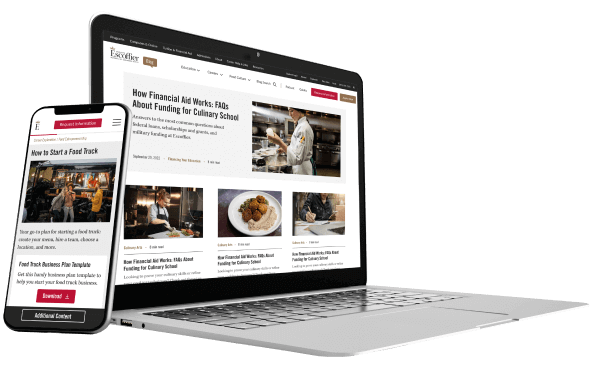Listen to This Article:
Nearly every restaurant owner thinks about ways to increase market reach, improve operational efficiency, and boost product promotion. Partnering with a third-party delivery service—such as Uber Eats, DoorDash, Grubhub, Postmates, or Caviar—can open doors to new customer bases that complement existing business models.
However, navigating the many options as a prospective merchant can be challenging, especially when meeting with sales representatives eager to secure your partnership. It’s crucial to extract and compare the essential details from these pitches to select the right platform—but this process can often feel overwhelming.
In this guide, we’ll explore the key benefits and drawbacks of third-party delivery services overall, and take an in-depth look at five of the most popular delivery platforms in the industry today.
Weighing The Pros and Cons of Third-Party Delivery Services
Each third-party delivery platform offers unique features and potential benefits. However, there are also common challenges that apply across the board. Whether you’re considering delivery, pickup, or online ordering integration, it’s important that you understand the potential benefits and drawbacks of becoming a merchant.
The Pros of Third-Party Delivery
A Massive (and Still Growing) Market
In 2024, the U.S. online food delivery market generated an estimated $353 billion in annual revenue. This figure is expected to exceed $500 billion by 2029, signaling massive consumer demand.
For restaurants, joining third-party delivery apps can substantially boost visibility.
Even if customers don’t place an order online, they may discover your restaurant through the app and decide to visit a later date. This increased exposure can function as a form of brand awareness marketing. Moreover, since most third-party services don’t charge activation or subscription fees for basic accounts, there’s typically very little upfront financial risk in testing the waters.
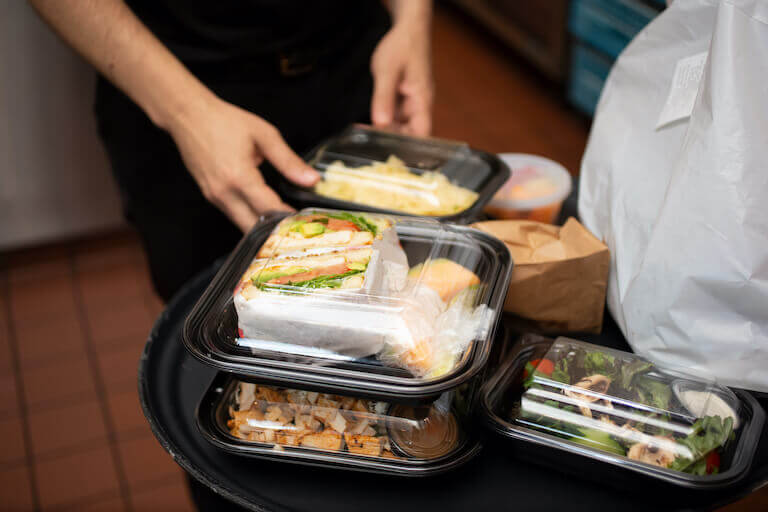
Becoming a merchant of a third-party service can significantly increase restaurant visibility (and orders).
Make Delivery a More Feasible Option
Delivery services require considerable resources, such as hiring and managing delivery staff, covering insurance, and handling complex logistics. For small-to-midsize restaurants, these expenses can make in-house delivery services unfeasible. By partnering with a delivery service, restaurants access delivery services without the expense of hiring, training, acquiring vehicles, or investing in online ordering infrastructure.
Merchant-Managed Delivery: Gain the Benefits of the App While Using Your Own Drivers
If you do have your own delivery drivers, you may be able to use these apps strictly to facilitate orders. This can reduce your commission fee and still lets you take advantage of the marketing benefits. These services include DoorDash Self-Delivery, Uber Direct, and Grubhub for Restaurants Self-Delivery.
Access Improved POS Integrations
In the early days of third-party deliveries, restaurants typically had to manage separate tablets for each app, with staff manually transferring orders to kitchen devices. This significantly increased the chance of order errors and reduced efficiency.
In 2025, nearly all major delivery services integrate directly into the top point-of-sale (POS) systems, like Toast Tab, Square, and Clover. When a customer orders through the third party, their order is directed to the kitchen display (and/or printer) to improve efficiency and accuracy. For restaurants without POS, or one that doesn’t integrate directly with the app, tablets are typically available for rent or purchase through the service.
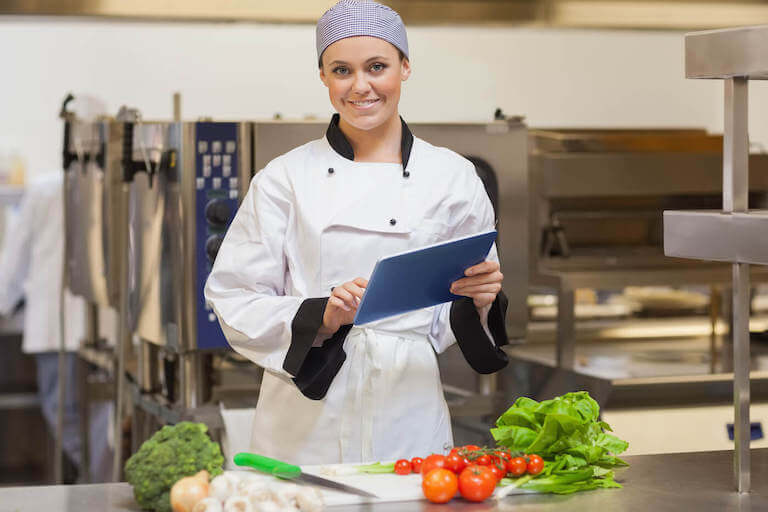
Delivery services are almost-always integrated directly into POS systems, reducing friction and frustration for staff.
The Cons of Outside Delivery
While third-party delivery services have become an essential part of many restaurant businesses, they’re not without their drawbacks. Here are some of the major points of tension restaurants are having with delivery services in 2025.
Potential to Undermine the Guest Experience
Unlike in-house delivery services, where you’re in total control of the delivery experience, third-party apps can lead to negative experiences you have little-to-no control over. Plus, without directly interfacing with the customer, your employees won’t be the ones building customer loyalty or resolving complaints.
Ultimately, the disconnect between the restaurant and the customer can negatively impact service quality and limit opportunities to drive repeat customers.
Strategies to Improve Customer Experience When Using Third-Party Delivery
There are some strategies that can safeguard the customer experience, even if delivery doesn’t go as planned. For example:
- Invest in stronger, sturdier, leak-resistent packaging
- Train staff how best to package foods for third-party delivery, such as keeping the hamburger bun separate from the patty to avoid sogginess
- Include reheating instructions for customers
- Leave a thank you note on packaging
- Consider adding a small freebie, like mints
Customers Can Blame the Restaurant for Bad Delivery
Customers who have a bad delivery experience often don’t know exactly how these platforms work. All they know is they ordered food, and it never arrived, or it arrived cold or smushed. They may then blame the restaurant, even if the actual breakdown happened with the driver or delivery platform.
And when there is a problem, customers may be confused about who to contact to resolve it. It’s much easier to contact a human being at your restaurant than at Uber Eats, so you may receive phone calls about driver errors that you can’t resolve.
Fewer Opportunities For Cross-Selling and Up-Selling
When guests order through third-party apps, you lose key moments to encourage spending. For example, deal structures and promotions may be limited to built-in app features, and servers won’t be able to recommend items—like drinks, appetizers, or specials. In short, while third-party apps may offer a simpler solution for restaurants and customers, they’re not necessarily designed to maximize check size.
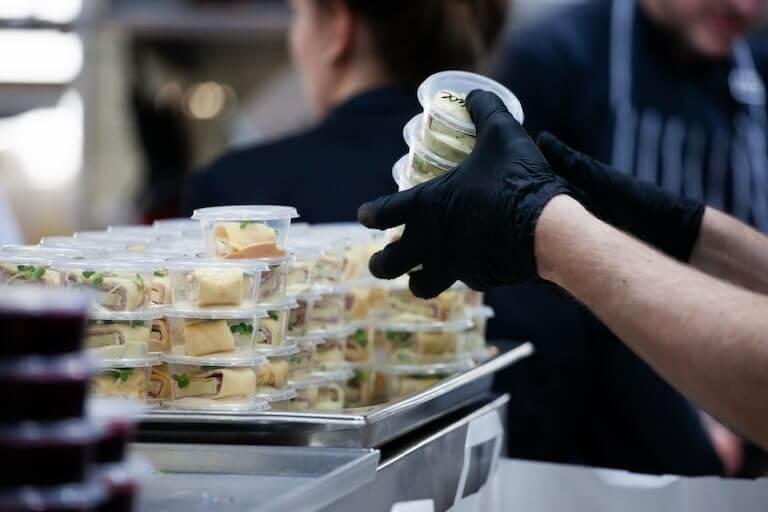
With third-party apps, you can lose out on key opportunities to increase the order size.
The Fees Can Be Steep
Third-party restaurant partners charge fees to both the customer and the restaurant. On the restaurant side, you may be charged for things like activation, commission, hardware, processing, marketing, and/or subscription fees. Commission fees alone may be upwards of 20% per order.
With many restaurants operating on slim margins to begin with, and the continued challenge of food inflation, these fees may entirely wipe out the earnings on third-party delivery services. An effective menu-pricing strategy is critical to maintaining profitability.
Loss of Valuable Marketing Insights
If a customer orders online directly from your restaurant, you can usually save their order information, name, phone number, and email address to use for future marketing. With this information, you can send them customized offerings, loyalty programs, updates, and more.
But, when you become a merchant for a third-party delivery service, the delivery service platform owns the customer data. That may mean customers are pushed to order from other restaurants on the platform rather than order from you repeatedly.
Drivers Aren’t Trained to Handle Food
Most drivers for these platforms are independent contractors, not employees. That means that they typically aren’t required to have food safety certifications, such as Food Handler cards or ServSafe® certification. They may not understand the risks that come with food that sits too long at room temperature and other quality control issues.
Ultimately, there’s a lack of clear accountability for food between pick-up and drop-off. While many restaurants take steps to prevent mishandling or safety risks—such as making certain foods unavailable for delivery, using time-stamped labels, or using insulated packaging—they may still be held accountable if food is mishandled by a third-party delivery driver.
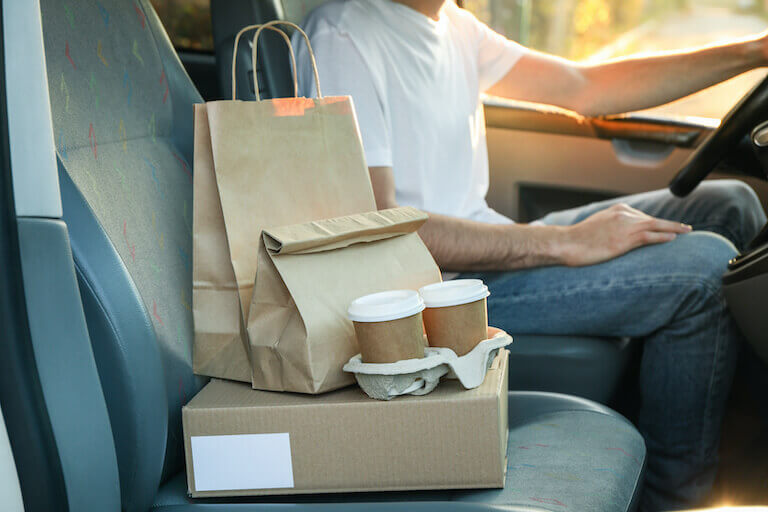
Even after food is handed off to a third-party delivery driver, the liability often still lies with the restaurant.
Not All Menu Items Are Delivery-Friendly
Whether you work with a delivery partner or deliver food yourself, you’ll need to think about how certain items will hold up in transport. While burgers, sandwiches, and pizza are often delivery-friendly, items like fried foods may be prone to sogginess. Even some of the best delivery foods—like grilled cheese sandwiches—can become a soggy mess if you use the wrong type of bread or steam-collecting packaging.
So before you choose to offer delivery, think about how items will fare in transport and alter your menu as necessary. Students in Auguste Escoffier’s School of Culinary Arts programs can explore menu planning to help them develop strategic menu choices for any restaurant.
Let’s review some of the major potential benefits and drawbacks of becoming a third-party delivery app merchant:
| Pros of Third-Party Delivery | Cons of Third-Party Delivery |
|---|---|
| Market Size: Tens of millions of users across delivery platforms. | Lose Control of Guest Experience: Reduced direct customer interaction. Low quality delivery experience may be blamed on the restaurant. |
| Marketing Tools: Increase brand visibility with free or paid marketing across platforms. | Limited Cross/Up-Selling: Harder to promote through apps. |
| Makes Delivery Feasible: Outsourcing delivery platforms, hiring, and associated costs can make delivery a viable option. | High Fees: Commissions and other fees may exceed 30%. |
| Merchant-Managed Delivery: Some platforms enable self-delivery, so restaurants can access customers with reduced commission fees. | Loss of Marketing Data: Customer information is owned by the platform. |
| Improved POS Integration: Orders can integrate directly into your kitchen system, improving efficiency. | Lack of Safety Training: Drivers may not have safety training, increasing the risk of food safety issues. |
Deciding whether a third-party delivery service is right for your business may not be straightforward. Factors like your restaurant type (e.g. fast casual vs fine dining), customer volume, revenue, and geographic location may affect your decision.
If the pros outweigh the cons, the next challenge is deciding which delivery service(s) you want to partner with.
Comparing the 5 Top Third-Party Delivery Services
The third-party delivery service landscape in the United States is primarily controlled by five key players: Uber Eats, DoorDash, Grubhub, Postmates (subsidiary of Uber Eats), and Caviar (subsidiary of DoorDash). Let’s break down some of the key features of each delivery platform:
| Feature | DoorDash | Uber Eats | Grubhub | Postmates | Caviar |
|---|---|---|---|---|---|
| Market Share (U.S.) | 67% | 23% | 8% | Included in Uber Eats’ market share | Included in DoorDash’s market share |
| POS Integration | Yes with Toast, Square, etc. Also offers DoorDash POS tech for small merchants |
Yes with Square, Toast, Clover, etc. | Yes with Toast, Square, Chowly, etc. | Same as Uber Eats | Same as DoorDash |
| Ease of App Use | Very user-friendly | Very user-friendly | Moderately user-friendly | Same as Uber Eats | Same as DoorDash |
| Hardware Required | No, but tablets available for a fee, or integrate with existing POS | No, but POS integration recommended | No, Grubhub offers Bring Your Own Device initiative | No, but many use kitchen display systems (KDS) | No |
| Other Features | Storefront option | Marketing tools available | Grubhub Direct access | Uber Eats backend support | DoorDash backend support |
(Market Share Sources: DoorDash, Uber Eats, Grubhub)
As this table shows, DoorDash dominates the market share, particularly in larger urban and suburban areas, making it a top choice for restaurants in busy areas. Services like Postmates and Caviar, on the other hand, can serve more niche markets, potentially making them better options for more specialized restaurants. Note that many restaurants maximize their exposure by becoming a merchant of several platforms, particularly in large urban areas.
While there are differences between these service platforms, many share similar fee structures—such as commission fees, optional hardware rentals, processing fees, and fees paid by customers. Some of this information can be difficult to find, and fees may vary based on your service location and support needs.
Here’s an overview of some of the service fees you may encounter if you decide to become a merchant with a third-party delivery service:
| Fee Type | Uber Eats | DoorDash | Grubhub | Postmates | Caviar |
|---|---|---|---|---|---|
| Activation Fee | $350, often waived | None | None | None | None |
| Commission Range (approximate) | 6% for pickup orders 15–30% for deliveries 15% for self-deliveries |
Basic Plan: 15% for deliveries 6% for pickup Storefront users may be exempt Prices increase for Plus and Premier plans |
5–20% pickup & self-delivery order fees Additional 10% for Grubhub delivery Up to 30% for marketing and delivery |
Lite Plan: 15–30% for delivery 6% for pickup Prices increase for Plus or Premium plans |
6% for pickup orders 15–30% for deliveries 15% for self-deliveries |
| Tablet/Hardware Fees (usually optional) | Wi-Fi tablet: $4.99/week Data-enabled tablet: $6.99/week |
Tablet rental: $6/week (U.S.) Order printer: $3.15/week |
Up to $119/month for tablets and POS integration | Tablet rental: $5/month | Same as DoorDash |
| Processing Fee | 2.5% + $0.29 per order (Only applies to Uber Eats Webshop) | 2.9% + $0.30 per order (Storefront) | 3.05% + $0.30 per order | Not disclosed | Not disclosed |
| Customer Delivery Fee | Varies by distance, demand, and promotions (approximately $2–$5) | $3.99+ | $0–$7+ | Similar to Uber Eats | Similar to DoorDash |
| Customer Service Fee | ~15% | ~10% | ~10–15% | ~15% | ~10% |
| Customer Small Order Fee | Varies | Varies | Varies | Varies | Varies |
(Sources: Uber Eats, DoorDash, Grubhub, Postmates, Caviar)
Delivery app fees can vary significantly, with each offering slightly different fees that can be difficult to easily compare:
- For restaurant operators considering delivery apps for the first time, DoorDash’s Basic Plan or Grubhub Direct may offer lower upfront costs and baseline commissions.
- For more established restaurants with high order volume, higher-tier plans with DoorDash and/or Uber Eat’s may be worth the higher commission rates because they can significantly increase visibility and traffic.
- Most delivery platforms allow independent hardware usage, which can significantly reduce costs.
- Customer fees should not be ignored, especially if you receive a high volume of small-purchase customers.
To make the most informed choice possible, let’s take a look at each of these delivery platforms in more detail.
Partnering with Uber Eats: What to Expect as an Uber Eats Merchant
Uber has successfully expanded from ride-sharing into food delivery, offering one of the largest networks in the nation with 23% market share. Here are a few things to consider before becoming a merchant partner:
Pros of Uber Eats
- Large reach: Globally, Uber Eats is available in 11,500 cities and 45 countries
- User-friendly app: Uber has a reliable app that has already revolutionized ride shares, now offering a streamlined experience for both customers and restaurant staff
- Quick Delivery: Uber has a large fleet of drivers, which can lead to faster order fulfillment
- Few card fees: Card fees only apply to Uber Eats Webshop, meaning the platform typically absorbs the cost of processing itself
- POS Integrations: Compatible with systems like Square, Clover, and Toast
Cons of Uber Eats
- $350 activation fee: Of the top delivery services, Uber Eats is the only one with an activation fee, though it’s sometimes waived
- Commission fees:
- 15% marketplace fee on every order when you have your own delivery drivers
- 15%-30% marketplace fee on every order when you use Uber Eats’ delivery drivers, depending on the plan you choose
- Customer-side fees: Uber Eats charges customers a service fee of 15%, plus a delivery fee (based on distance and demand). They may also charge a $2 small order fee for orders less than $10
Partnering with GrubHub: The Benefits and Drawbacks for Restaurants
GrubHub used to dominate the third-party delivery business, but they’ve since been overtaken by competitors like DoorDash and Uber Eats. In 2021, Grubhub introduced Grubhub Direct, allowing independent restaurants to create customizable ordering websites that bypass marketing fees. Grubhub Direct enables relationships between restaurants and their customers. Therefore, despite a smaller market share, Grubhub Direct offers unique benefits that can remedy some of the the most significant drawbacks of third-party delivery services.
Pros of GrubHub
- Large market: While not as extensive as Uber Eats or DoorDash, GrubHub is available in over 4,000 cities and works with over 300,000 restaurants, maintaining about 8% market share in the U.S.
- Direct Order Links:If customers order from your restaurant’s direct order link on your website or in a marketing email rather than on GrubHub’s app, you won’t have to pay the marketing commission. Plus, these customized websites enable more direct customer relations
- No activation fee: Unlike Uber Eats, Grubhub does not have an activation fee
- POS integrations: Grubhub integrates with major POS systems like Toast, Square, and Micros
Cons of Grubhub
- High restaurant fees:
- GrubHub charges a 20% marketing fee for orders placed through the Grubhub app or website
- 10% delivery fee if you use their delivery drivers—but you can opt for self-delivery
- Credit card processing fee of 3.05% + $0.30 per transaction
- Tablet/hardware rental: Optional hardware can cost up to $119/month
- Wide range of customer fees: Customers face delivery, service, and small-order fees that are similar to Uber Eats
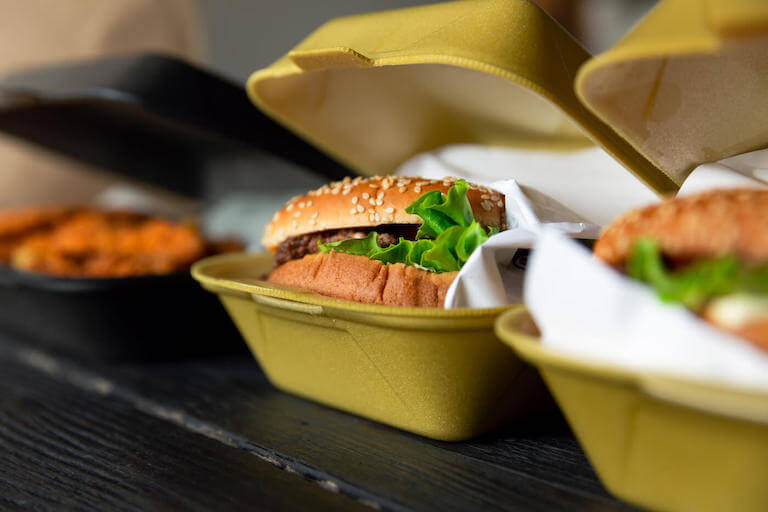
Each delivery service platform offers slightly different benefits and drawbacks.
Partnering with DoorDash: Is Being a DoorDash Merchant Worth it?
DoorDash currently holds a significant majority of the third-party delivery service market share, with 67% of the U.S. market as of 2025. With flexible pricing models and a dominant presence in the market, it’s an obvious choice for many restaurant operators. But it does come with trade-offs.
Pros of DoorDash
- Leading market share: As of 2024, DoorDash partnered with nearly 600,000 restaurants and has over 42 million active users
- Flexible pricing: Restaurants can choose between different commission tiers so they can balance visibility with budget
- POS integrations: Like other platforms, DoorDash offers seamless integrations with major POS systems like Toast and Square, reducing the risk of human error and increasing efficiency
- No activation fee or credit card processing fees: Unless using their Storefront, restaurants are not charged a card processing fee
- No commission fee for the first 30 days: If you want to try DoorDash but aren’t sure if it’s the right fit for your restaurant, you can usually get a free-trial
Cons of DoorDash
- Commission fees:
- Delivery commissions range from 15%-30%, depending on the plan you choose (Basic, Plus, or Premier)
- Self-delivery has a lower commission fee of 8%-12%
- Tablet rental fees: If you choose to rent hardware from DoorDash, it may cost approximately $24 per month
- Customer fees: In areas where local laws may limit the commission DoorDash can charge to restaurants, the difference may be passed on to customers as a “regulatory response fee.” These fees might be significant enough to deter price-sensitive customers
Partnering with Caviar: A Solution for Upscale Restaurants?
Caviar, now owned by DoorDash, serves a niche, high-end segment of the food delivery market. While its market share may be smaller than competitors, it’s differentiated as a premium delivery service that often partners with upscale restaurants, including those competing for Michelin stars. However, as a partner with DoorDash, some of this specialization may be going away, and Caviar is increasingly partnering with more casual restaurants.
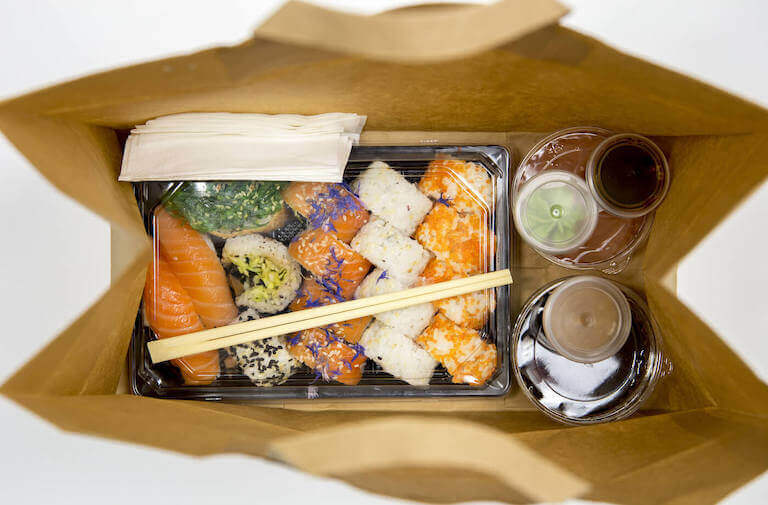
Customers who order through high-end services like Caviar typically expect more thoughtful presentation than you’d get from the standard takeout restaurant.
Pros of Caviar
- Upscale brand positioning: Caviar markets itself as a delivery platform for high-end food, meaning it may appeal to less price-sensitive customers who may have larger order values
- POS integration: As a subsidiary of DoorDash, Caviar benefits from the same seamless POS integrations
- Supports DashPass holders: Customers with a DoorDash subscription may be able to access free delivery services
Cons of Caviar
- DoorDash backend: Though it’s marketed as a high-end platform, Caviar shares the same pool of delivery drivers as DoorDash. That means customers may experience many of the same execution issues that DoorDash customers encounter, such as long waits, cold food, and more
- Small market share: Caviar has a very small market share, so there are fewer customers on the app
- Restaurant fees: Caviar does not publicly disclose merchant fees, but research indicates they align with those of DoorDash
Partnering with Postmates: Is It Still Relevant for Restaurants?
Postmates, which was acquired by Uber in 2020, is known for wide delivery offerings, such as meals, convenience store items, and beverages. While it may not be as commonly used, partnering with Postmates can still increase visibility through Uber Eats.
Pros of Postmates
- Uber Eats visibility: Thanks to the Uber acquisition, Postmates merchants are also visible to Uber Eats customer, which may substantially increase order volume
- Likely no-to-low credit card processing fee: Postmates doesn’t disclose their processing fees, but they likely align with Uber Eats
- POS integrations: Like other platforms, Postmates integrates easily with most major POS systems
Cons of Postmates
- Restaurant fees: Since Postmates has been acquired by Uber, they operate on the same pricing model as Uber Eats, including delivery commissions ranging from 15% to 30%
- Lack of differentiation: Since its acquisition, Postmates is largely another channel of Uber Eats, rather than a distinct platform with a unique user base
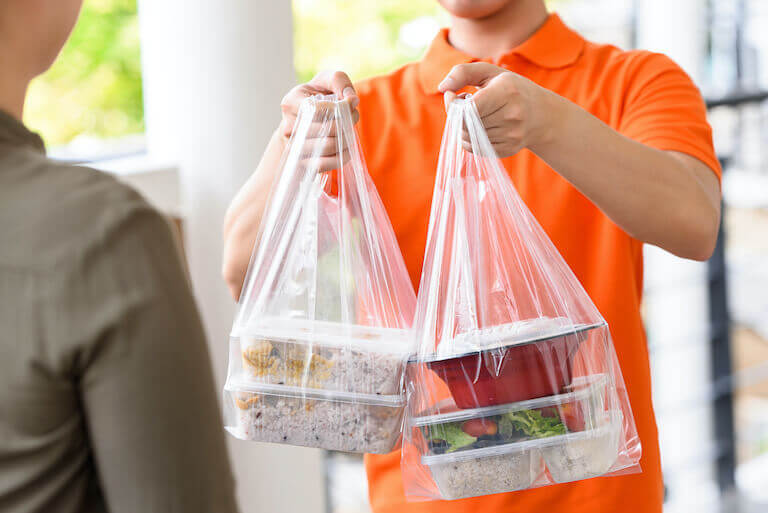
Uber Eats and Postmates share backend integration, meaning that while there are some slight differences in branding in some areas, they share the same customer base and services.
Don’t Forget Your Local Delivery Services
While national apps like DoorDash, Uber Eats, and Grubhub are instantly-recognizable brands at the helm of the food delivery scene, many cities and regions also offer local delivery platforms and services. They may have notable benefits, such as:
- Lower fees: Oftentimes, local platforms offer significantly lower service fees
- Unique marketing opportunities: Local platforms may offer unique partnerships, promotions, and highly specialized services for their partners
- Customer support: In many cases, local delivery services offer high-quality, customized support and flexibility
The primary drawbacks of these services include a smaller delivery driver pool, significantly smaller market share, and less polished or seamless integrations and apps.
What’s Right For Your Restaurant?
At the end of the day, the primary drawback of third-party delivery services is usually the cost. The fees—particularly commission fees—can add up quickly. But, with lower-tier plans, self-delivery, and other options, many restaurant operators find that it’s worthwhile. Keep in mind that platforms may offer room for negotiation, especially for restaurants with high order volume.
Whatever you choose, the key is tracking performance metrics closely, such as average order value, delivery frequency, and customer ratings. Without careful budgeting and menu pricing strategies, even items like to-go packaging can threaten your profit margins.
If you’re looking to sharpen your management skills or learn restaurant marketing strategy, consider furthering your education with a degree in Hospitality & Restaurant Operations Management or Escoffier’s Food Entrepreneurship program. To get started, contact our admissions department.
FOR MORE TIPS ABOUT RESTAURANT AND FOODSERVICE OPERATIONS, CHECK OUT THESE ARTICLES NEXT:
- Restaurant Marketing 101: An Essential Guide
- How Much Money Can Restaurants Make?
- The 5 Best Food Truck POS Systems
This article was originally published on May 17, 2021, and has since been updated.
